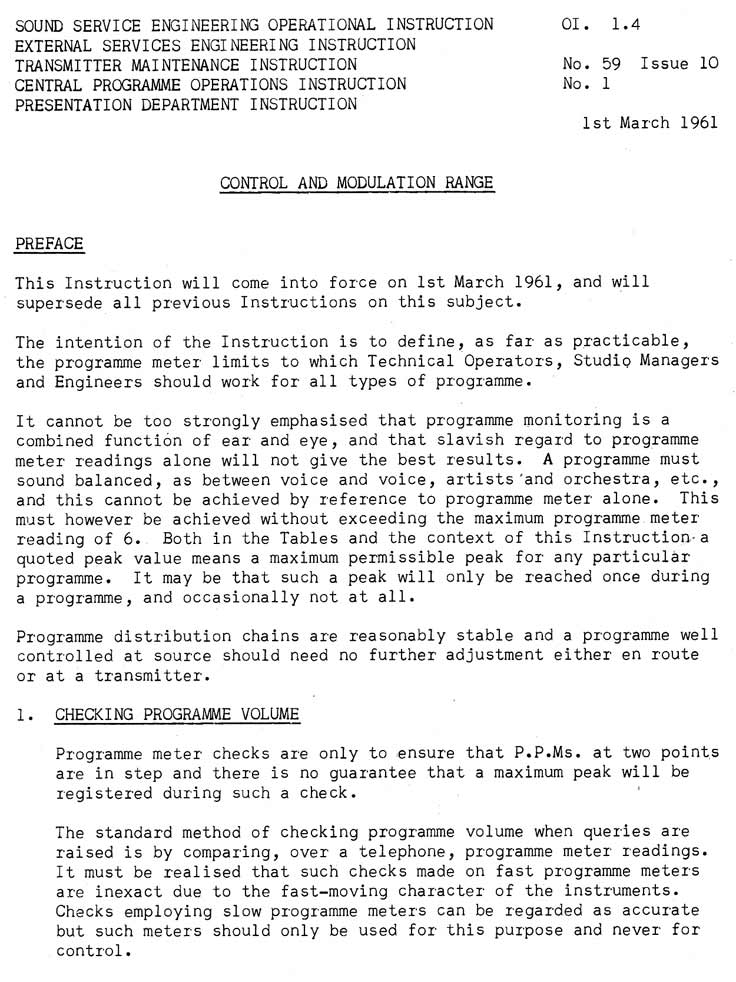
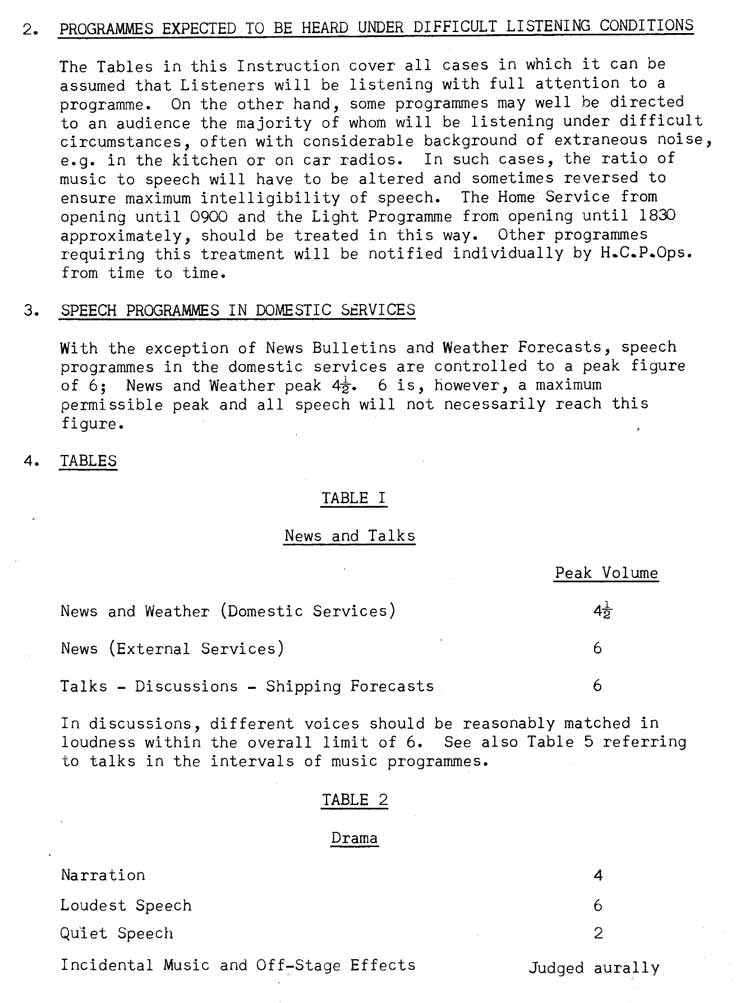
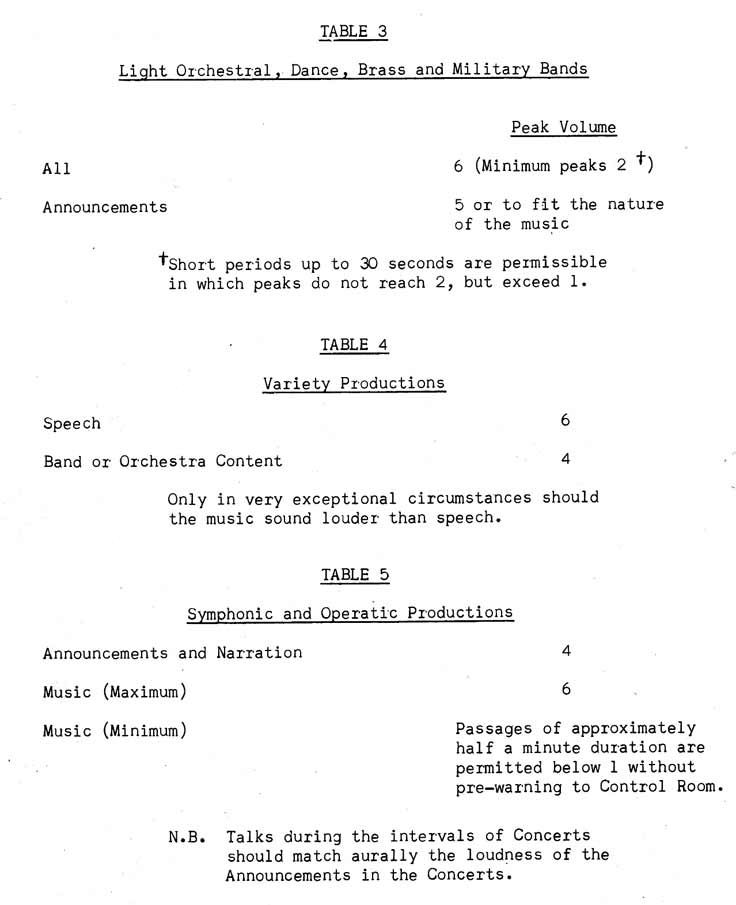
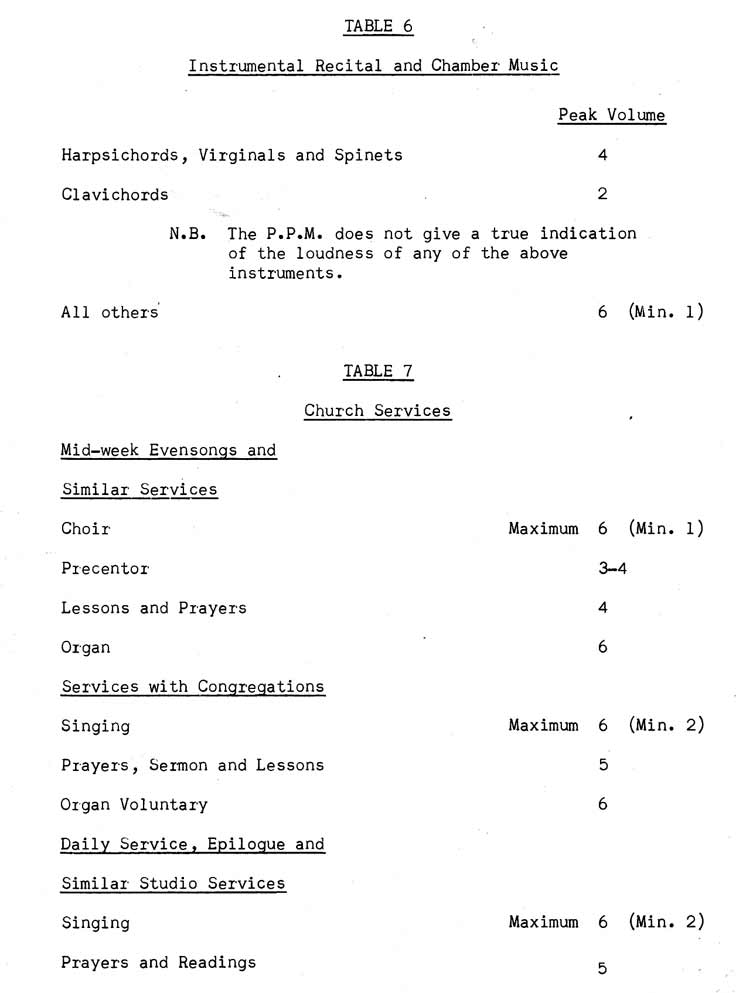
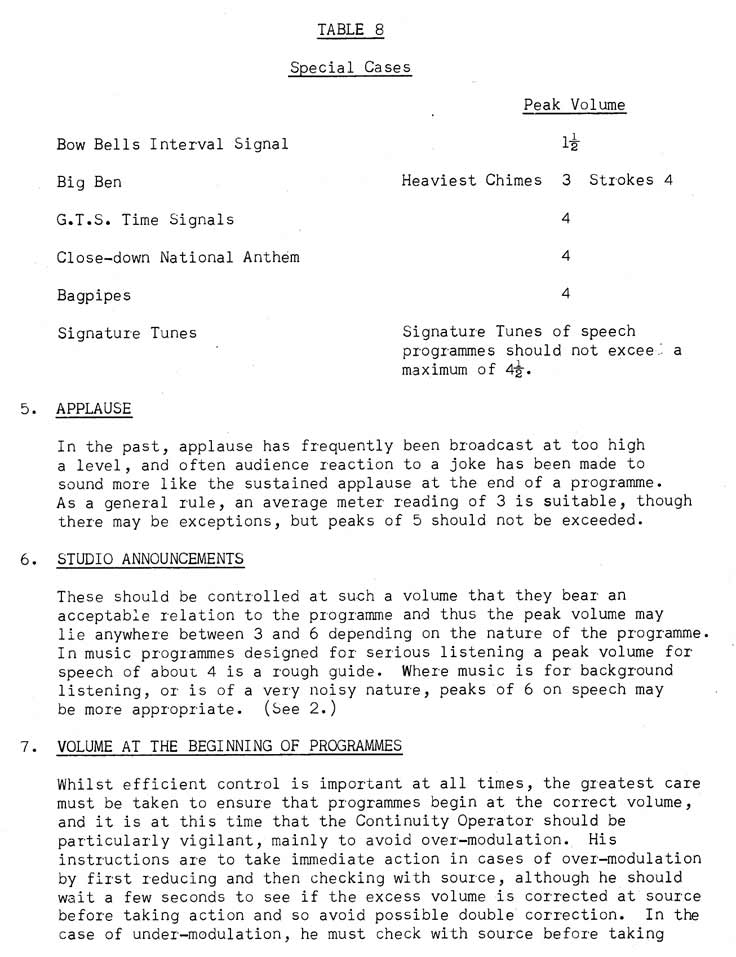
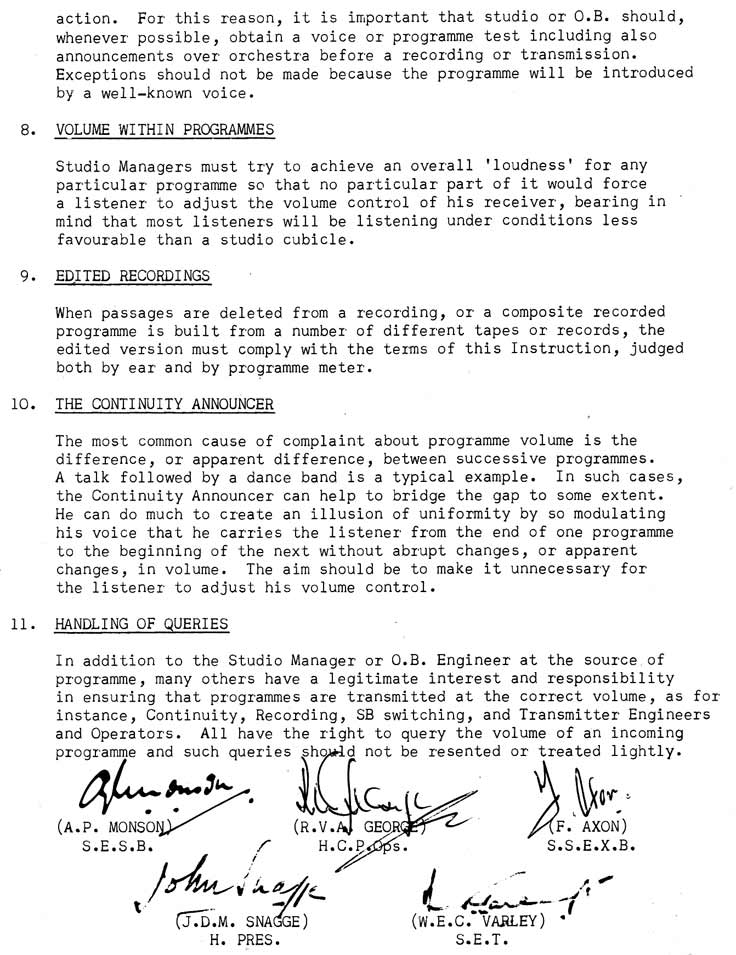
A nice collection of BBC job abbreviations:
S.E.S.B. - Superintendent Engineer, Sound Broadcasting.
H.C.P.Ops - Head of Central Programme Operations.
S.S.E.X.B. - Senior Superintendent Engineer, External Broadcasting.
H.Pres. - Head of Presentation.
S.E.T. - Superintendent Engineer, Transmitters.
Jumping ahead 28 years, here's the instruction from 1989.
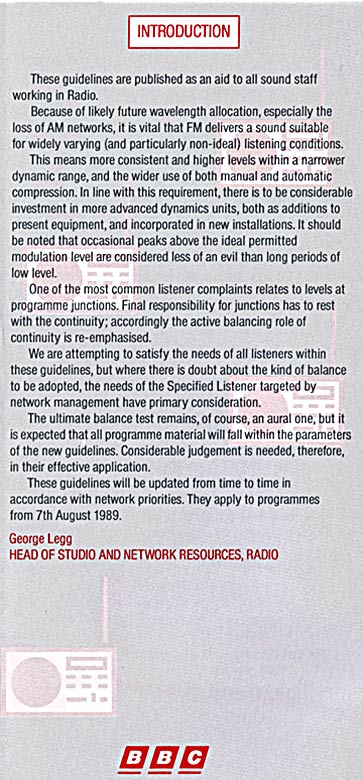
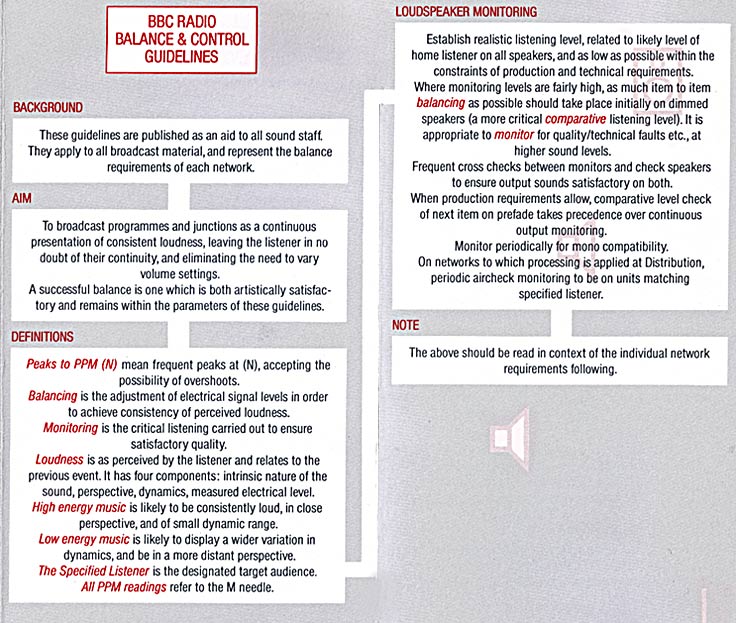
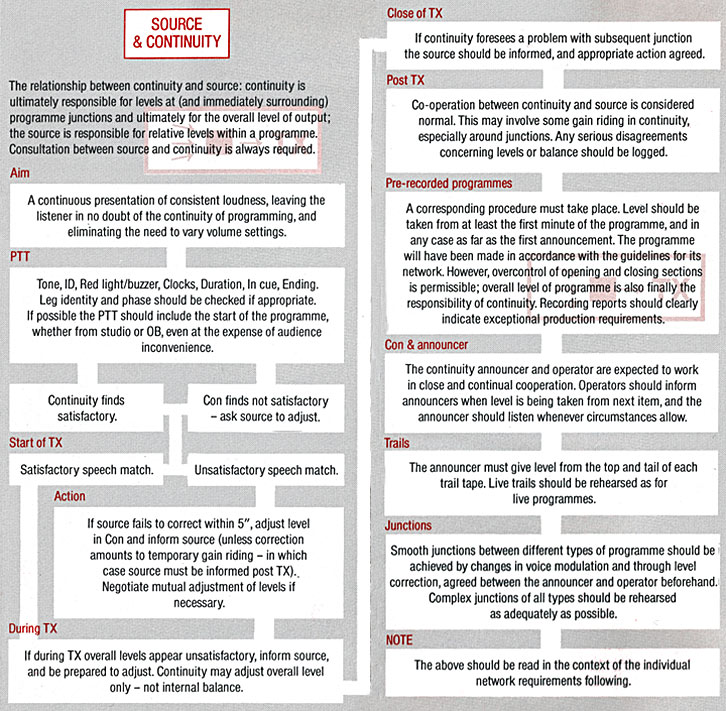
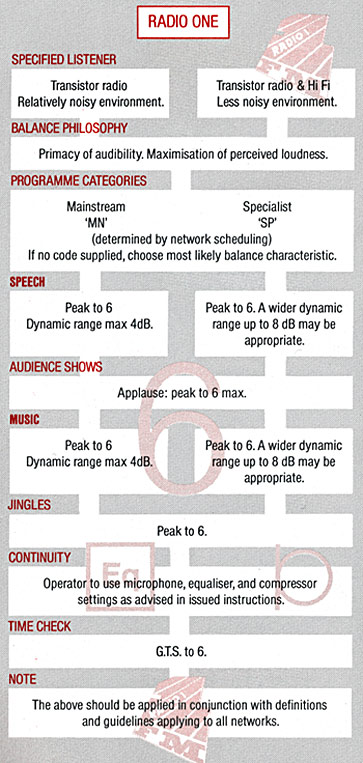
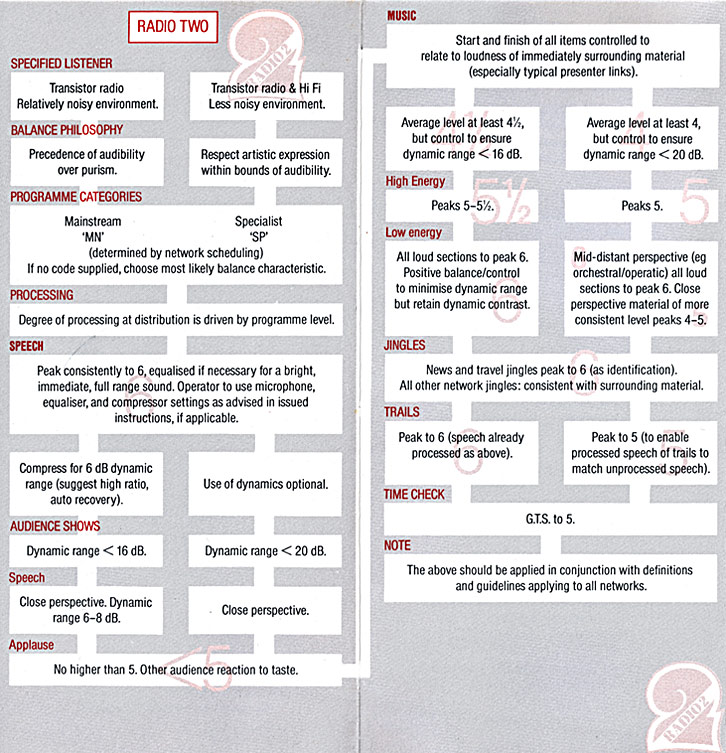
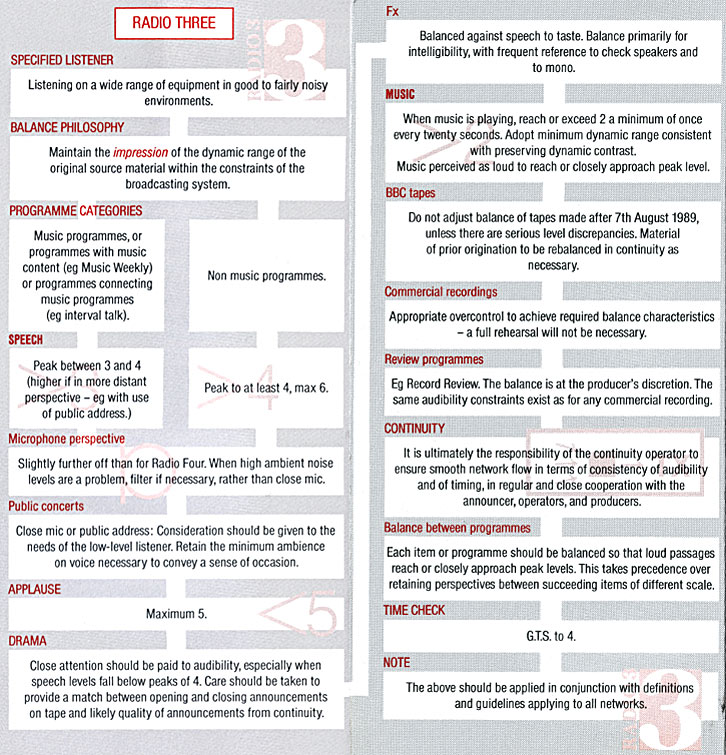
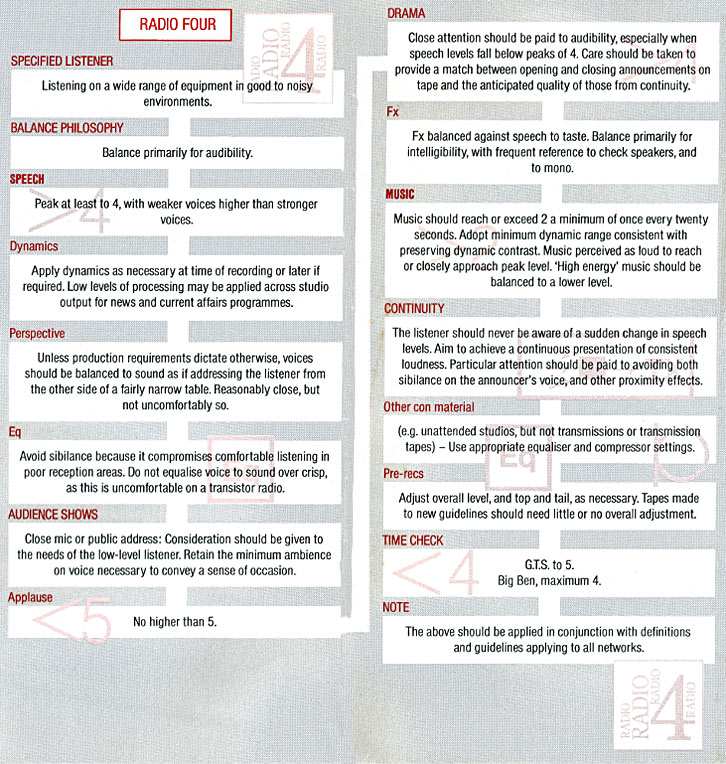
THE USE AND MISUSE OF EFFECTS IN A RADIO PLAY
Radio is a totally blind, half deaf medium. in its more common form it is monaural, having only one ear . It has no direction, only two dimensions , perspective and time.
The medium is an illusion within this framework but to succeed it must escape from these boundaries by stimulating the imagination. Once this is achieved there is no limit to its scope - it's as feasible to do "The Cruel Sea" or "Lawrence of Arabia " as "Waggoners Walk". Some things are not radiogenic - conjuring and juggling would require inspired commentaries and even then would not succeed.
To stimulate the imagination we must guide it subtly by presenting the mind with a logical progression, readily understood and requiring little or no conscious brainwork on its part. Each step of the development must be like the rungs of a ladder - easily seen and not requiring a large step - if a rung is missed and the progression is unexpected, then the foot goes through, the listener flounders, is jerked back to reality and you've lost him.
The whole art form is like a mosaic or jigsaw with a very limited number of pieces - each must be present and in its correct disposition for a picture to emerge.
Assuming the story content and characters to be satisfactory we must establish the setting or "locale" immediately the curtain goes up - we fade in.
The acoustic will be apparent from the first audible sound, even if it is unintelligible - so that must be absolutely correct. Each listener will have a pre-conceived idea of dimension relative to the size of the acoustic - most of these are fairly common and by association a lot of reverberation or "echo" is assumed to be a large interior and no reverberation an exterior.
Having set the locale in its generally accepted acoustic we have defined the limits of the "set" - the frame has been built and everything must fit into these dimensions.
The actors' voices must carry the expected degree of reverberation relative to their mic. position. The mic. is the focal point of the action, the keyhole to which we press the listener's ear.
Recorded Effects
Supply the general exterior backcloths, occasionally interiors (factories, large offices, etc.) and off-stage noises such as thunder, dogs barking.
Ideally, all noises should be actuality and action takes place "on site"; (obvious difficulties). Specially recorded effects some solution; (if possible). Otherwise very careful research necessary to find the right sound.
The disadvantage of the recorded effect is that it is "a package deal". Its acoustic perspective and function were fixed when recorded, and very little can be done to alter any of these.
(a) A reverberant acoustic cannot be lessened.
(b) Perspective is a subjective assessment of direct/ indirect sound. All direct sound conveys nearness - all indirect sound great distance. You cannot make a close effect appear distant by making it quieter the direct/indirect ratio is unchanged - done electrically it is quieter and that's all. The same applies to the converse - a distant sound will get louder but not nearer by increasing the gain - the ratio is still the game.
(c) Function on the recording (duration of sequence) must run its course.
By using A.E.R.- injecting the effect via a loudspeaker in the actual studio will "colour" the recording acoustically as required - and by manipulation of level and mic. perspective the proximity of the sound can be changed at will.
Recommendation when making Recorded Effects
Record the sound in the deadest acoustic you can achieve. Colouration can easily be added later.
Record the sound as close to mic. as feasible - perspective can be achieved later.
Function should be recorded "sectionally" beginning and middle, and middle and end or entirely in duplicate.
Composite Sound Picture or Montage
When painting the scenery, decide on the absolute minimum of effects to typify the locale - the few sounds without which the situation could not be accepted.
Obviously if a sound is mentioned in the script it must be audible; the temptation must be resisted to have every noise that could exist. It is extremely tiring to listen to too much noise - as with any dialogue, effects improve with pruning.
Beware that the scenery is not more interesting than the dialogue - unless intended. Think of an extremely fussy and detailed stage set with elaborate and continually changing lighting effects.
Effects must match in acoustic, time of day and period. They must certainly be authentic or believed to be authentic. Applause/rain - electric motors - Underground train/river. Complexity or problem with trains - steam, diesel, diesel electric, electric - where and when. Aeroplanes - how many engines and where mounted - wings (leading or trailing edge) or tail. Caravelle, V.C.10, Catalina - relationship of engine to cabin accommodation and relative noise - sonic or super-sonic. Piston engines, turbo-prop or pure jet - which routes used - when used. Fleet Air Arm or R A.F. uses and types - period.
The effect must be easily identified within seconds in its own right or immediately explained by dialogue - don't make the listener guess. You'll get too many different answers if he makes the effort or he won't bother. Either way you've lost.
Traffic without a motor horn is an unidentifiable rumble. Too many motor horns or a constantly changing pace or noise in the background is distracting.
Cars are a big problem. Modern designs are too quiet - right for "Waggoners Walk" - an accepted form of conveyance, but no use in "Cops and Robbers" type car chases, where much of the excitement comes from the car's speed and manoeuvres = skidding, acceleration etc. must be audible.
The position of the action within the set must be fixed - where are we; what, therefore, would we hear? What is foreground, mid-ground and background, and bear in mind any change of focus introduced by movement. A simple way of introducing movement is to change the relative perspectives between two or more sounds. With a six effect montage it is possible to arrive at 720 different sound pictures.
Decide on the part played by the effect - is it merely necessary for locale setting, does it complement the dialogue or does it enhance the drama of the dialogue?
Normally, dialogue has priority over effects in loudness as conveying more information, drama or plot.
There are occasions when the effects would convey more - earthquakes, crashes - shipwrecks, when the noise gives the dramatic force and panic stricken, unintelligible cries would be the accepted human attitude. Decide On your priorities and make the distinction clearly apparent aurally.
Spot Effects
All the previously mentioned points apply equally when doing spot.
The actor in radio is a voice - nothing more. The body is supplied by the Spot S.M. Endeavour to keep the voice and body believably together. Ideally one mic. for both where possible - two mics. could give a change in acoustic when the body is introduced. Much easier for the actor to time his lines when he can "see" his "body". He must characterise for each member of the cast.
Characterisation can be enhanced or destroyed by a knock on a door or attitude determined by cup or telephone being put down.
The position of doors, windows and furniture must always be within the limits of the set and the position altered when the focus of the action shifts. Continuous progression with a character brings everything on mic. We must be able to change the focus by moving the effect or putting on a separate mic. Remember the difficulties of two mics. working - it's really nullifying the advantages of spot and should only be used as a last resort.
Doors
Character of the door comes from its mountings - walls and type of room. Portable doors defeat themselves unless made to sound part of a solid structure. Doors should have only the obvious fittings and should have as nebulous a character as possible - no squeaks or rattles. These are added as required.
Character deduction from door knock and timing of door.
Telephone - its construction and facilities.
Ringing and timing of lift and replace. Position for approach. Dialling must follow number - never AAA1111. Fitted into script if a hold-up. Beware actual numbers; P.O. list those which can be used; don't make them up - duplication of code with others possible. Continental and other rings (Bush House advice).
Footsteps
Should never be used solely as a means of motivation - accepted convention that actors have feet and move about 2" above the ground - voice will convey movement.
Once one pair of feet is audible then everyone must be audible - it snowballs and conveys little beyond a squad drilling on a parquet floor.
They most certainly can convey great subtleties of character beyond the ability of dialogue. A limping murderer - a dragging foot - a squeaky shoe - these are suspense-making in their own right. This is a legitimate use of footsteps - "The Squeaky Shoe Murder" - or when there can be no dialogue - only one character present and soliloquy would be out of context.

